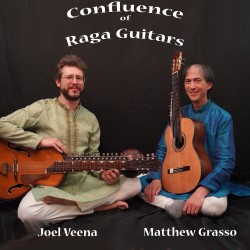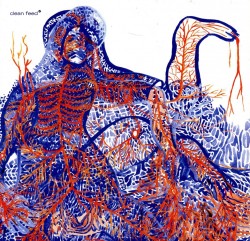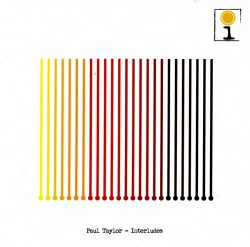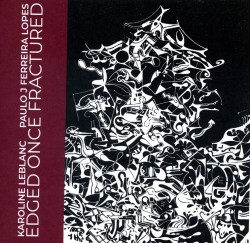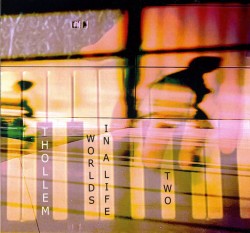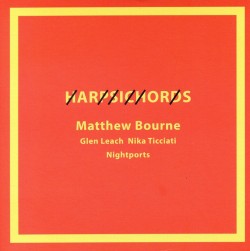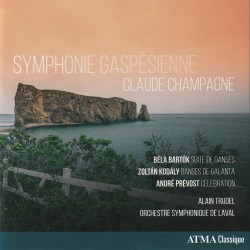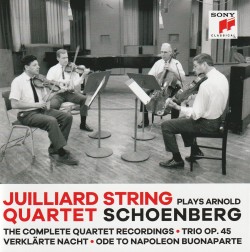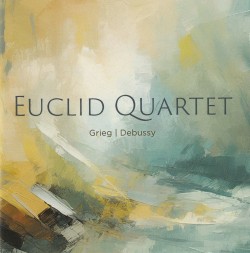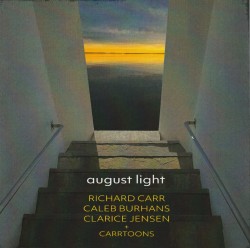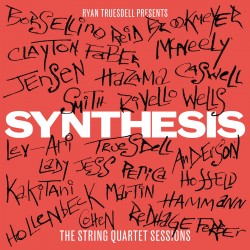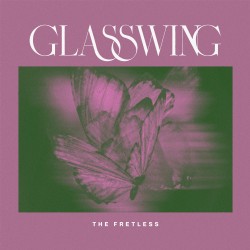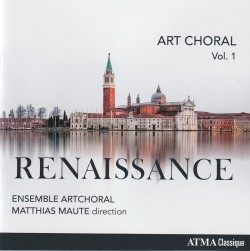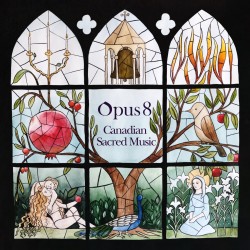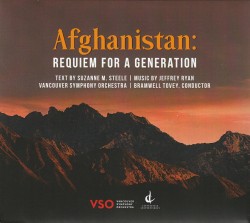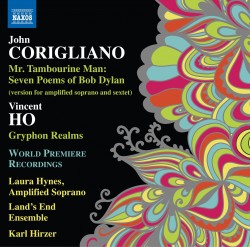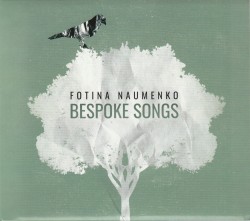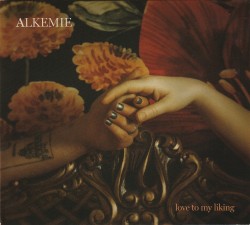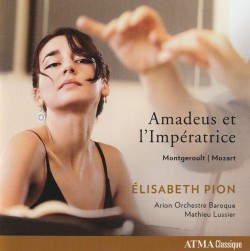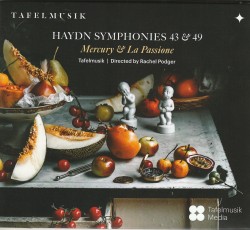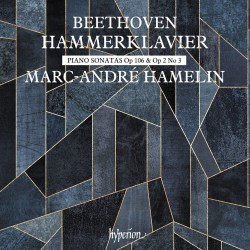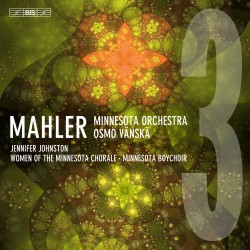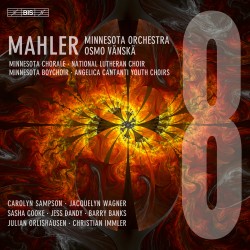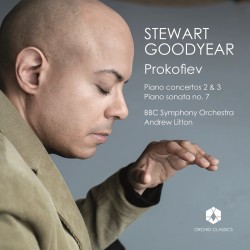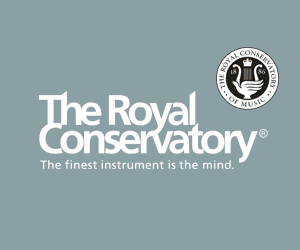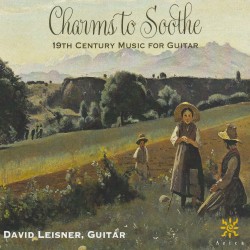 Charms to Soothe – 19th Century Music for Guitar is the latest CD from American guitarist David Leisner. “Some of these gems are not played often,” says Leisner, “and I hope that this recording might call attention to them.” (Azica Records ACD-71638 azica.com/albums/charms-to-soothe)
Charms to Soothe – 19th Century Music for Guitar is the latest CD from American guitarist David Leisner. “Some of these gems are not played often,” says Leisner, “and I hope that this recording might call attention to them.” (Azica Records ACD-71638 azica.com/albums/charms-to-soothe)
Leisner was a leading figure in the rediscovery of the Austro-Hungarian composer Johann Kaspar Mertz (1806-1856), and it is works by Mertz that open and close the disc – his Nocturne Op.4 No.2 and Two Pieces from Bardenklänge Op.13 respectively.
Leonard Schulz (1814-1860) was born in Vienna but for most of his career lived in London. Only a few of his works were published in his lifetime. His Three Etudes from L’indispensable Op.40 are brief but engaging pieces. Giulio Regondi (1822-1872) was Swiss-born but was also active in London; he is represented here by Two Etudes – No.6 in D Minor and No.8 in G Major.
Works by two contemporary giants of the guitar form the middle of the recital, Two Etudes Op.31 No.23 in E Major and Op.6 No.11 in E Minor by Fernando Sor (1778-1839) and Four Pieces from Op.148 by Mauro Giuliani (1781-1829) complete an absolutely delightful – and yes, soothing – album.
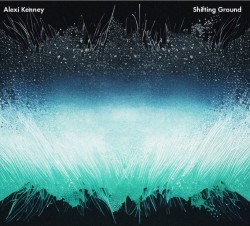 Shifting Ground, the debut album from the American violinist Alexi Kenney weaves together seminal works for solo violin by J. S. Bach with a collection of pieces from the 17th century to the present day. Designed to be listened to as a set, it includes premiere recordings of works by Matthew Burtner, Salina Fisher and Angélica Negrón (Bright Shiny Things BSTC-0205 brightshiny.ninja/shifting-ground).
Shifting Ground, the debut album from the American violinist Alexi Kenney weaves together seminal works for solo violin by J. S. Bach with a collection of pieces from the 17th century to the present day. Designed to be listened to as a set, it includes premiere recordings of works by Matthew Burtner, Salina Fisher and Angélica Negrón (Bright Shiny Things BSTC-0205 brightshiny.ninja/shifting-ground).
Individual movements from the Bach Sonatas & Partitas are spread throughout a somewhat uneven programme, the Adagio from the Sonata No.1 in G Minor opening the CD and the Chaconne from the Partita No.2 in D Minor closing the disc. Baroque violin music is also represented by Nicola Matteis’ Passaggio roto from his Ayres for the Violin and the terrific Alia Fantasia by his son Nicola Matteis Junior, its constant cross-string effects a high spot of the CD.
Three of the tracks are excellent arrangements by Kenney: Schumann’s Widmung, Op.25 No.1; Ariana Grande’s thank u, next; and a clever and intricate version of Joni Mitchell’s Blue.
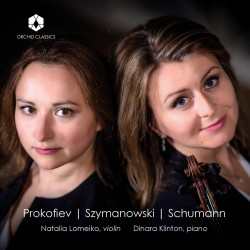 Violinist Natalia Lomeiko is in superb form, ably supported by pianist Dinara Klinton on their disc Prokofiev | Szymanowski | Schumann, described thematically as suggesting the composers’ own escapes from their personal struggles (Orchid Classics ORC100313 orchidclassics.com/releases/orc100313-natalia-lomeiko).
Violinist Natalia Lomeiko is in superb form, ably supported by pianist Dinara Klinton on their disc Prokofiev | Szymanowski | Schumann, described thematically as suggesting the composers’ own escapes from their personal struggles (Orchid Classics ORC100313 orchidclassics.com/releases/orc100313-natalia-lomeiko).
Clara Schumann’s Three Romances, Op.22 are perfect pieces for displaying the warmth of one’s tone, and Lomeiko makes the most of the opportunity with a performance full of big, lush playing. Robert Schumann’s Fantasy in C Major, Op.131 from the same year as Clara’s piece – 1853 – was originally for violin and orchestra and is heard here in the 1937 arrangement by Fritz Kreisler.
There are two works by Szymanowski: a sweeping, rapturous performance of the 1915 Impressionism-inspired Mythes, Op.30 and the Nocturne and Tarantella, also from 1915, with a particularly dazzling Tarantella. Prokofiev’s 5 Pieces from Cinderella complete the disc.
Terrific playing from both performers and a resonant, warm recording ambience make for an outstanding CD.
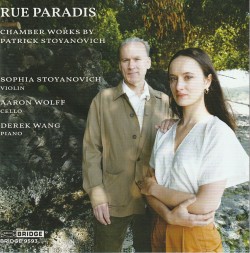 Patrick Stoyanovich is a Pacific-Northwest-based composer, teacher and performer, and an outstanding jazz and concert pianist. On Rue Paradis several of his more recent chamber works are performed by his violinist daughter Sophia Stoyanovich, along with pianist Derek Wang and cellist Aaron Wolff (Bridge Records 9593 bridgerecords.com/products/9593?).
Patrick Stoyanovich is a Pacific-Northwest-based composer, teacher and performer, and an outstanding jazz and concert pianist. On Rue Paradis several of his more recent chamber works are performed by his violinist daughter Sophia Stoyanovich, along with pianist Derek Wang and cellist Aaron Wolff (Bridge Records 9593 bridgerecords.com/products/9593?).
All of the works here are first recordings: the Romance for Violin and Piano from 2010; the Violin Sonata No.1 from 2016; the Duo for Violin and Cello “Field of Blackbirds” from 2014; and the Violin Sonata No.2 from 2020, the final moments of which feature the tender Rue Paradis theme that gives the CD its title. They’re predominantly tonal pieces that display solid craftsmanship and a satisfying dynamic and emotional range.
In her booklet notes Sophia says that her father’s compositions are not composed specifically with her in mind, but in a recent interview in the local Bainbridge Island Review both father and daughter agreed that their relationship proved essential for the music’s creation. “When you know somebody on that intimate of a basis, it really does make a musical connection and a huge difference in expression,” Patrick said. “I wrote these pieces for her, and her technique, and what she sounds like.”
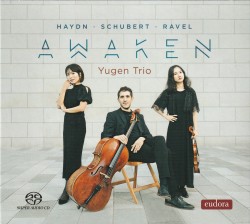 It’s always intriguing to read how artists describe the raison d’être behind their album concepts; the connection sometimes appearing quite tenuous. On their CD Awaken the Yugen Trio explores various ways of awakening that define them as a group as well as referencing the awakening of their international career (Eudora EUD-SACD-2404 eudorarecords.com/shop/catalogue/awaken).
It’s always intriguing to read how artists describe the raison d’être behind their album concepts; the connection sometimes appearing quite tenuous. On their CD Awaken the Yugen Trio explores various ways of awakening that define them as a group as well as referencing the awakening of their international career (Eudora EUD-SACD-2404 eudorarecords.com/shop/catalogue/awaken).
The Haydn Piano Trio in A Major, Hob.XV:35, for instance, comprises “joy towards the new day.” In Schubert’s Sonatensatz in B-flat Major, D.28 the three opening chords resemble abrupt waking from a dream, and the Ravel Piano Trio M.67 resembles the vivid, unrestrained fantasy of our dreams and the ambivalence on waking.
The only thing that matters, though, is the music itself – how effective the recital is, and how well it’s played, and these performers score highly on both counts. The Haydn is a charming early work, cleanly played and well-balanced, and the Schubert an attractive first attempt by the 15-year-old composer. The Ravel, full of French colour and sensitivity accounts for over half of the CD, and an idiomatic performance ends an album that, in a way, also tracks the awakening of the piano trio form itself.
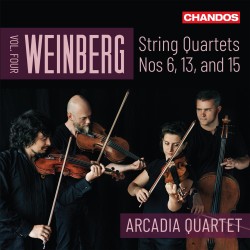 The Arcadia Quartet is back with the latest release in their series of the string quartets of Mieczysław Weinberg with Weinberg String Quartets Vol.4, featuring quartets Nos. 6, 13 and 15 (Chandos CHAN 20281 chandos.net/products/catalogue/CHAN%2020281).
The Arcadia Quartet is back with the latest release in their series of the string quartets of Mieczysław Weinberg with Weinberg String Quartets Vol.4, featuring quartets Nos. 6, 13 and 15 (Chandos CHAN 20281 chandos.net/products/catalogue/CHAN%2020281).
The six-movement String Quartet No.6, Op.35 is from 1946 and its strikingly advanced language, relative to traditional Soviet works of the time, later lead to a short-lived ban by the authorities. Published in 1949 and reprinted in 1979, it was apparently only premiered in 2007. The String Quartet No.13, Op.118 from 1977 was dedicated to the Borodin Quartet who were so closely associated with the Shostakovich string quartets, and like that composer’s 13th quartet from seven years earlier is in one movement of about 15 minutes. Weinberg dispensed with expressive directions for each movement, simply indicating metronome markings.
It’s also metronome markings only in the String Quartet No.15, Op.124, a striking nine-movement work from 1979, again leaving interpretation to the performers.
The Arcadia Quartet’s intent is to promote a body of work which has long remained overlooked, and with outstanding performances like these one has to believe that Weinberg’s 17 string quartets can justifiably stand alongside those of his friend Shostakovich.
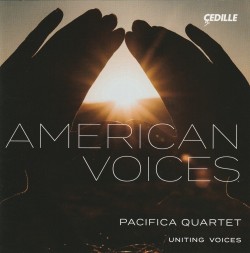 The folk element is front and centre on American Voices, with the Pacifica Quartet continuing its exploration of American musical traditions (Cedille CDA 90000 228 cedillerecords.org/albums/american-voices).
The folk element is front and centre on American Voices, with the Pacifica Quartet continuing its exploration of American musical traditions (Cedille CDA 90000 228 cedillerecords.org/albums/american-voices).
Dvořák was a passionate advocate for a distinctly American classical sound. Although he used no known American folk melodies in his String Quartet in F Major, Op.96 “American” the work never loses its attractive rustic and folksy feel.
In recent years the music of Florence Price has been the subject of enormous exposure and universal praise, although I’m not sure that it’s always fully warranted. Her writing for string chamber ensembles, however, is outstanding, and her two-movement unfinished String Quartet in G Major from 1929 is a real gem, wistfully melodic, richly harmonized and showing a fine grip of instrumental writing. It follows the Dvořák here, and with its similar folk influences doesn’t for a moment sound out of place or inferior.
Louis Gruenberg’s Four Diversions for String Quartet, Op.32 was written in 1930, and the Jazz Age influence is evident in the brief but effectively written movements.
The CD closes with the world premiere recording of Pitch In (2023) by James Lee III, a setting of a poem that addresses the issue of food wastage and hunger. United Voices under Josephine Lee join the Pacifica in a work commissioned for the album.
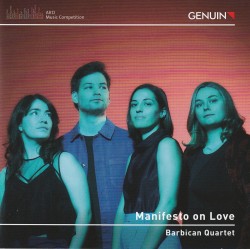 Since 2015 the German GENUIN label has been awarding a special prize to a winner of their choice at the ARD International Music Competition in Munich, financing the production of a CD to be released in their ARD Music Competition Edition series. Manifesto on Love is the resulting debut album from the Barbican Quartet, First Prize winners in 2022 (GEN 24878 barbicanquartet.com).
Since 2015 the German GENUIN label has been awarding a special prize to a winner of their choice at the ARD International Music Competition in Munich, financing the production of a CD to be released in their ARD Music Competition Edition series. Manifesto on Love is the resulting debut album from the Barbican Quartet, First Prize winners in 2022 (GEN 24878 barbicanquartet.com).
Janáček’s String Quartet No.2 “Intimate Letters” from 1928 opens the disc. Written mere months before his death and frequently referred to as his “manifesto on love” it is essentially a love letter to his muse, the much younger Kamilla Stösslová. It’s full of nervous intensity, naked emotion, passionate outbursts and an almost painful intimacy, all beautifully captured by the Barbican.
There’s a definite Janáček feel to The Ear of Grain, the Dobrinka Tabakova work commissioned by the 2022 ARD competition as the compulsory piece and one which the performers clearly know well.
Two Schumann works – his String Quartet in A Minor No.3, Op.41 and the brief song Wenn ich ein Vöglein vär, arranged by the quartet’s violist Christoph Stenczka – complete a fine CD.
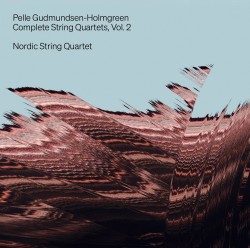 String Quartets Nos.7-10 are presented on Pelle Gudmunsen-Holmgreen Complete String Quartets Vol.2, in exemplary performances by the Nordic String Quartet (Dacapo Records 8.226218 naxos.com/CatalogueDetail/?id=8.226218).
String Quartets Nos.7-10 are presented on Pelle Gudmunsen-Holmgreen Complete String Quartets Vol.2, in exemplary performances by the Nordic String Quartet (Dacapo Records 8.226218 naxos.com/CatalogueDetail/?id=8.226218).
In view of the fact that String Quartet No.7, Parted from 1984 and String Quartet No.8, Ground from 1986 were both commissioned by the Kronos Quartet it’s somewhat surprising to see that these are world premiere recordings of the works. Parted is very modern in sound, with hints of minimalism and a good deal of downward bow pressure digging into the strings. Ground plays with a looping bass line, and was described by the composer as one of his most enchanting.
String Quartet No.9, Last Ground for string quartet and ocean from 2006 (another Kronos collaboration) again features a ground bass, but is dominated by the opening and closing sound samples of roaring ocean waves, wind and associated wildlife. String Quartet No.10, New Ground from 2011 is an absolute delight, based on Pachelbel’s Canon ground but with an extra bar and added blues touch – and a Haydnesque joke ending!
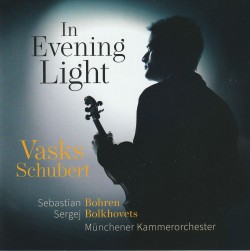 On In Evening Light – Vasks, Schubert violinist Sebastian Bohren and the Münchener Kammerorchester under Sergej Bolkhovets present the world-premiere recording of Pēteris Vasks’ Concerto No.2 “In Evening Light” for Violin and String Orchestra (Avie AV2662 avie-records.com/releases/in-evening-light).
On In Evening Light – Vasks, Schubert violinist Sebastian Bohren and the Münchener Kammerorchester under Sergej Bolkhovets present the world-premiere recording of Pēteris Vasks’ Concerto No.2 “In Evening Light” for Violin and String Orchestra (Avie AV2662 avie-records.com/releases/in-evening-light).
Composed in 2020, 23 years after his Concerto No.1 “Distant Light” the titles reveal closely-linked worlds. “Each time that I take up the symbol of light,” says the composer, “I want to show brightness returning after darkness and all of its fears.” This dualism of darkness and light is represented in the middle movement, but the third returns to the calm, deep lyricism of the first with its promise of returning light. It’s a truly beautiful work, superbly played here.
The haunting Lonely Angel – Meditation for Violin and String Orchestra from 2006 is described as a vision of an angel flying alone above humankind, filled with grief at how cruel and aggressive we are to each other. The unmuted solo violin floats above the muted string players in another immediately accessible and atmospheric work.
Between the two is Schubert’s Rondeau brillant in B Minor, originally for violin and piano and heard here in an effective arrangement for violin and strings by Paul Suits.
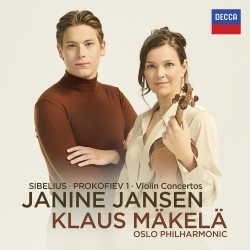 The always outstanding Janine Jansen is back with her first new concerto recording in nine years with Sibelius & Prokofiev Violin Concertos, Klaus Mäkelä and the Oslo Philharmonic providing stellar accompaniment (Decca 4854748 store.deccaclassics.com/products/sibelius-prokofiev-1-violin-concertos-cd).
The always outstanding Janine Jansen is back with her first new concerto recording in nine years with Sibelius & Prokofiev Violin Concertos, Klaus Mäkelä and the Oslo Philharmonic providing stellar accompaniment (Decca 4854748 store.deccaclassics.com/products/sibelius-prokofiev-1-violin-concertos-cd).
Jansen has as strong a bowing arm as any player I’ve seen, so a towering performance of the Sibelius Concerto in D Minor, Op.47 driven by strength and power comes as no surprise. Her stunning technique and impeccable musicianship and insight are evident throughout a wonderfully expressive, sensitive and dramatic performance, a superb opening movement followed by a beautiful slow movement and a dazzling finale. You’ll hear many excellent performances of this concerto, but it’s difficult to believe you’ll ever hear one better than this.
The standard never drops in a lovely performance of Prokofiev’s Concerto No.1 in D Major, Op.19. Completed in 1917 and not premiered until 1923, its dreamy opening movement is balanced by the fiendishly difficult Scherzo middle movement in the usual Prokofiev mixture of lyricism and cynicism.
 The young Ukrainian violinist Bohdan Luts, who won the violin section of the Carl Nielsen International Competition in 2022 at the age of 17 makes his album debut with works by Dvořák, Bruch and Nielsen, with Anna Skryleva conducting the Odense Symphony Orchestra Orchid Classics ORC100301 orchidclassics.com/releases/orc100301-bohdan-luts).
The young Ukrainian violinist Bohdan Luts, who won the violin section of the Carl Nielsen International Competition in 2022 at the age of 17 makes his album debut with works by Dvořák, Bruch and Nielsen, with Anna Skryleva conducting the Odense Symphony Orchestra Orchid Classics ORC100301 orchidclassics.com/releases/orc100301-bohdan-luts).
Dvořák’s Concerto in A Minor, Op.53 from 1879 is a lovely work that perhaps still doesn’t really get the recognition it deserves. Luts certainly shows it in the best possible light, his commanding technique and sweet, full tone beautifully illustrating its folk nature and Romantic style.
Exactly the same can be said for the performance of Bruch’s Scottish Fantasy Op.46, an exact contemporary of the Dvořák from 1880 but a work of enduring popularity. The maturity that Luts exhibits in both concertos is impressive.
The middle work on the disc is Nielsen’s short but lovely Andante con duolo or Romance from his 2 Fantasy Pieces, Op.2. Originally written for oboe and piano, Nielsen himself played the piece on violin, and the violinist Hans Sitt eventually transcribed it for violin and orchestra.
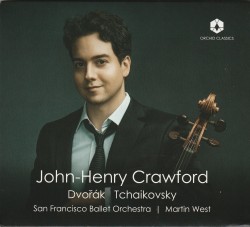 Two major works in the cello repertoire, both originally associated with a virtuoso cellist, are featured on Dvořák and Tchaikovsky, the new CD from the young American cellist John-Henry Crawford. Martin West conducts the San Francisco Ballet Orchestra (Orchid Classics ORC100292 orchidclassics.com/releases/orc100292-john-henry-crawford-dvorak-tchaikovsky).
Two major works in the cello repertoire, both originally associated with a virtuoso cellist, are featured on Dvořák and Tchaikovsky, the new CD from the young American cellist John-Henry Crawford. Martin West conducts the San Francisco Ballet Orchestra (Orchid Classics ORC100292 orchidclassics.com/releases/orc100292-john-henry-crawford-dvorak-tchaikovsky).
In writing his Variations on a Rococo Theme, Op.33 Tchaikovsky went further than merely seeking and accepting advice from the German cellist Wilhelm Fitzhagen and allowed him to make minor alterations to improve the work. Fitzhagen, however, went further, making cuts, adding repeats, re-ordering sections and even deleting one variation completely. Tchaikovsky was never comfortable with the changes, but the edition Fitzhagen published became the standard text, as heard here.
Inspired by Victor Herbert’s second cello concerto, Dvořák’s Cello Concerto in B Minor, Op.104 was written with Czech cellist Hanuš Wihan in mind, although he was unable to perform the premiere.
Crawford has a lovely tone, warm and full of colour and nuance, and a commanding technique. The challenges of the Tchaikovsky are handled with grace and agility, and he plumbs the depths of the Dvořák in a passionate and sensitive performance, West and the orchestra providing top-level support.
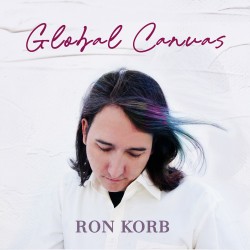 Global Canvas
Global Canvas

